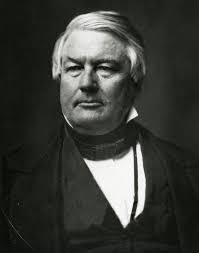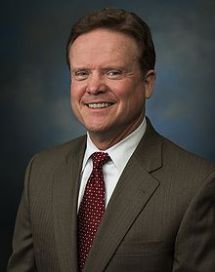
Book: Franklin Pierce: Martyr for the Union
Author: Peter A. Wallner
1. Date- Appearing just three years after volume one, Dr. Wallner’s second and final work on Pierce once again brought the 14th President center stage. While the initial tome focused on a young Pierce and his subsequent campaign for the presidency, this second volume focuses extensively on the presidency of Pierce and his retirement years. As always, it is significant to examine the world that produced the biography. The published year of 2007 was a political season that provides an interesting backdrop to the goals of Dr. Wallner. For starters, the Presidency of Bush was receiving its “first drafts” during this year. Simply put, the public was exposed to the first cradle to grave narratives despite Bush’s presidency still two years from completion. Much like Pierce, the “first drafts” were less than effusive with praise and reflected a volatile time in American politics. While Pierce tried to assuage a political constituency that barely resembled the one that elected him just four years prior, President Bush saw a Republican Party distancing itself from him and the emergence of fervent anti-Bush forces such as Barack Obama and Hillary Clinton. After looking at the Pierce pinnacle, the book concludes with an extended look at an older Pierce. For the reader, he is a man who is closing the book on his long career. Further still, he has the task of resurrecting his image, correcting misjudgments and general character rehabilitation to look forward to in retirement. The man in the White House in 2007 probably saw a similar fate for himself. It is easy to see why this work on a presidency a century and a half ago feels like a modern tale. At just eight years old, this work remains one of the most recent works in the Project.
Grade: A-
2. Scope- By dividing his work into two volumes, Dr. Wallner makes this analysis of scope a bit easier. After spending volume one focusing the readers on the early life of Pierce, Dr. Wallner allows this second work to zero in on the presidential and post-presidential actions of Franklin Pierce. Like in the first foray, this set up is largely successful in regards to a total scope of Pierce. Dr. Wallner bookends his discussion on the Pierce presidency. First, a chapter on the launch of the presidency. Later, to complete the bookend, Dr. Wallner brings a nearly identical chapter on the cresting of the Pierce administration. Though at times jumping around on the number line, there is a fairly consistent chronological march covering significant events while still bringing the reader depth in background information. It would continue to be the strength of the works overall. The scope during the presidency maintains strong depth which leaves the reader very in tune with the pace and rhythm of Pierce as a man and public official. The post presidency also fits nicely in the scope and right in with the modern expectation for a biography to cover the post-presidential years in depth. The scope brings powerful substance in the discussion of the Civil War years, an event that is hinted at throughout the scope of the two works. Dr. Wallner very effectively used the War Between the States to show Pierce as a product of his times and the struggle of the less spectacular to grasp its ramifications. Overall, the scope is yet another solid aspect of a two volume success.
Grade: A-
3. Author- http://www.c-span.org/video/?184075-1/book-discussion-franklin-pierce-new-hampshires-favorite-son
(Please see discussion in the Author section of Volume One).
4. Length- This category continues to show the many differences in presidential biographies in this Project. When one couples 322 pages from the first volume with 500 pages from the second, readers are treated to a long form presidential biography usually reserved for the greats. Additionally, this biography is original for the era. While it offers a unique flavor, that reality is not normally seen in antebellum president’s biographies or in this Project in general. In fact, these works combined are the second longest works after Remini’s three volume work on Jackson. The benefits in this category do not stop there. As mentioned before, two volume works often attempt to be 50/50 when it comes to page length. Dr. Wallner comes closer than some to this equal distribution but his slightly larger second work re-emphasizes the importance of the presidential years while not diminishing the writings of volume one. This balance resembles the long biography characteristics with extensive background discussions of issues and a deeper dive into the personalities in Pierce’s pre-presidency, his presidency and afterwards. While there are no doubt moments that these works drag along, Dr. Wallner is mostly able to prove that the life of Pierce is significant enough for a long biography dive rarely seen in the antebellum era. For fans of long biography it is unlikely that an obscure chief magistrate will get better treatment in the length department. An extended work that (mostly) remains engaging.
Grade: B
5. Mission- Volume one of Dr. Wallner’s deep study was the first substantial Pierce work in three generations. Volume two moves this work from a simple update to a substantial biography providing an insightful look at a dark time in America’s history. While the Civil War is played over and over (and over) from bookcases to reenacted battlefields, Dr. Wallner continues the mission that unsuccessful presidencies are just as significant as Mount Rushmores. Just as quickly as this truth is made clear, he reminds us to not go nuts. This is no rehab job. It would be easy for Dr. Wallner to try to move a disgraced president into a shinier limelight and redeem his reputation. Instead of going the rehab route, Dr. Wallner creates a long form biography in two parts that allows him to delve into the complicated and impossibly polarized 1850s. He does this without making a dirt heap into Mt. Everest. Much like the Fillmore and Buchanan biographers that bookend Pierce, the card to be played is a man trapped by the unprecedented struggles of 1850s America. Dr. Wallner gracefully straddles the line from pasting over flaws to simply showing that anyone of Pierce’s time would react the same way. He is correct in not putting Pierce on a postage stamp but saying, “his administration had a few significant achievements. Through it all an honest president never lost faith in the American people, in the Union, or the Constitution.” These simple understated words from the author show his mission but also remind the reader what a razor thin margin exists between the great presidents and miserable failures. Without works like Dr. Wallner’s, we would know all about the great presidencies but never learn how quickly they can go the opposite direction. Sometimes to appreciate the angels, once must read up on the demons. No offense, Frank.
Grade: A-














